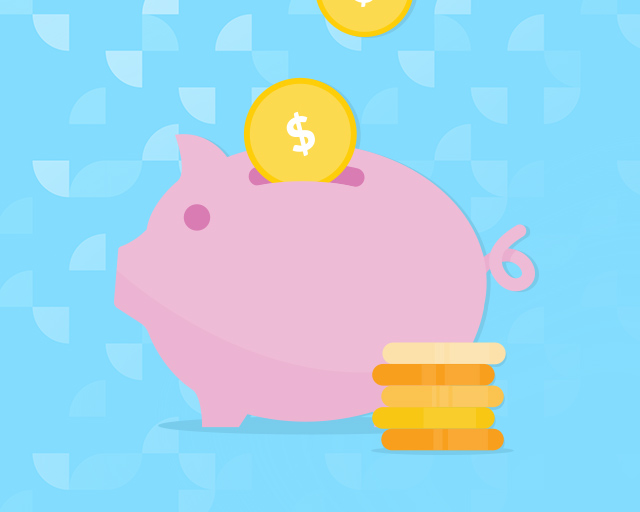

Your money… it’s part of your everyday life, but how well do you know it? Chances are, you already know some things about your money. But there’s always more you can learn. By mastering your money, you can make it work better for you to help reach your financial goals.
Money is a big subject and learning how to master it can seem overwhelming. To make things easier, let’s break it into four steps: spending, saving, borrowing and protecting. Follow these steps to build your money mastery.
Spending money is easy, right? Managing your spending is a different story. It can seem like a hassle, but understanding how you spend can help you reach financial goals and master your money.

make a budget
Keeping a budget can help you manage spending, make purchase decisions, save and plan for the future. It might take time at first, but the payoff is worth it. The folks at the Consumer Financial Protection Bureau have an easy-to-use printable worksheet to get you started.
https://files.consumerfinance.gov/f/documents/cfpb_well-being_monthly-budget.pdf
List your monthly income from wages/salary. Use your net pay – that’s the amount paid to you after deductions like taxes and benefits. And make sure to include tips, government benefits and other sources of income. If your income changes from month to month, use the average from the past 3 months.
Next, use your bank, utility and credit card statements to estimate what you spend each month. Make this part easier by breaking expenses into categories, like housing, family, food, transportation and entertainment.
Now subtract your expenses from your income to see what you have left over. You can use this money to save or pay down debt.
If your result is zero or lower, take another look at your expenses. Are there ways you can cut back a little and save money?
use your budget
Congrats! You finished your budget – now what?
You can use your budget as a tool to manage your spending and work toward financial goals.
You can compare your budget to your actual spending each month and make adjustments if they’re out of line. You can even set aside a weekly amount for those little extras that come up – and stick to your limit.1
Planning for holidays or special occasions? Use your budget to decide how much money you can set aside or save, so you can enjoy them without worries.1
Check your balances before you go shopping and set a spending limit that won’t break your budget. 1
Now that you know more about spending, you’re ready for the next step in mastering your money – saving.

getting started
We all know it’s important to save, but getting started can be hard. Ever heard of the saying, “pay yourself first”? Keep it in mind when you think about saving. Set aside an amount from each paycheck to put into a savings account. You might even be able use direct deposit through your employer to deposit part of your paycheck to savings automatically. That money is for you and your financial goals
Don’t know how much to save? That’s where your budget comes in handy. Use it to figure out how much money you have left over after expenses. Set part of it aside for savings. And if you’re getting a tax refund this year, you can set part of it aside for savings, too.
set a savings goal
You set goals all the time. Goals to exercise more. Goals to learn a new skill. You probably have other goals too. Do you dream of owning a home? Retiring in comfort? Setting a savings goal can help those dreams come true.
First, think about your savings goal. Here are some ideas to get you started:
Save for emergencies. Starting an emergency fund is one of the easiest ways to begin saving. It can help you with unexpected expenses, like car and home repairs or medical bills, without going into debt.
Save for a big purchase. This could be anything from a new TV to a family vacation. Do some research to decide how much money you’ll need for the purchase (retail price, taxes, other expenses). Then decide how much time you’ll need to save that amount.
Save for retirement. It’s never too early (or too late) to think about retiring. You may have a 401k option through your employer, or you could choose an IRA or other plan. Don’t have a lot of extra cash? No problem. Many plans let you get started with a small amount.
SMART goals
Now that we’ve given you some ideas, let’s talk about the HOW of setting a savings goal. The SMART goal method is a popular one you can use to set financial goals. The letters in SMART stand for Specific, Measurable, Achievable, Relevant, Time Bound.2
By making your goals SMART you’ll find it’s easier to follow through and reach them. As you plan, ask yourself, is it:
Specific: What am I saving for?
Measurable: How much do I need to save?
Achievable: Can I reach this goal?
Relevant: Why is this goal important? Is now the right time to do it?
Time bound: When will the goal be complete?
The best thing about saving money is that you can see the results of your hard work as you watch it grow. Plus you’ve taken another step in mastering your money!
You’ve taken two big steps in mastering your money. Now let’s talk about borrowing. Because even if you’re really good at saving, there are times when you may want to borrow money to cover a large expense.
Borrowing money isn’t always a bad thing. In fact, if you do it right, borrowing can help you build credit history and make it easier to qualify for a car loan or mortgage in the future.3 Opening a credit account is one way to borrow money and build credit history.

choosing a credit account
How do you go about opening a credit account? It seems everywhere you look, there are companies that want to lend you money. The Consumer Financial Protection Bureau (CFPB) recommends you shop around and compare offers before you open an account.4 Why? Because cards offer different rates and come with fees that you may not want to pay.
APR
One way to shop credit offers is by APR – annual percentage rate. APR is the yearly interest rate charged for a loan or credit account. A credit account with a higher APR will cost more and could take longer to pay off.
Other fees to consider
APR is only one way to compare credit accounts. Other fees and charges to think about are annual fees, late-payment fees, cash-advance fees, balance-transfer costs and penalty APR.4
your credit score
Once you have a credit account, it’s important to use it well and maintain a healthy credit score. That’s the three-digit number that shows how likely you are to repay debts. Scores can range from 300 to 850 – the higher the score, the better. And because there are different credit scoring formulas and different credit reporting sources, you may have more than one credit score.5
growing a healthy credit score
Making payments on time, every time is the best way to grow a healthy credit score. This is where your budget from Step 1 can help. It will remind you to set aside money each week or month to pay off debts. Setting up automatic payments or electronic reminders are other ways to avoid missed payments. 5
Also, keep an eye on the credit limits for your accounts. Staying too close to the limit can affect your score. Try to keep your balance low in proportion to your total credit limit.
This all takes time, so be patient and stick with it. Your credit scores are based on your history, and improve the longer you have credit accounts open, make purchases, and pay back on time.
Once you’ve done the hard work to manage your spending, saving and borrowing, it’s time for the fourth step in mastering your money. Taking basic steps to protect your money can help prevent financial pain.

preventing identity theft
Identity theft is when someone uses your personal or financial information without your permission. Identity thieves might steal your name, address, credit and bank account numbers, Social Security number and more.6 Once a thief has your information, they can use it to make purchases or open accounts in your name, which can hurt your credit record and credit score.
ways to stay safe
Keep documents secure and use strong, unique passwords for all your credit, financial and medical accounts. A password manager can make this easier.
Use multi-factor authentication (MFA) whenever you can. MFA requires an extra step to check your identity when you log in to your accounts and can help stop identity thieves.7
Check your credit and bank accounts regularly. Look out for charges for things you didn’t buy. Review your bank statements for any withdrawals you didn’t make.
Be watchful when you’re away from home. Avoid using public Wi-Fi networks, which may not be secure. In stores, look out for card-skimming devices that might be attached to a card reader or ATM. Contact-free options like a wallet app on your phone or tap-to-pay cards are more secure.7
Review your credit report. Accounts in your name that you don’t recognize could be a sign of identity theft.6
You did it!
By taking these 4 steps to master your money, you’ll be able to make better decisions on how to spend, save, borrow and protect it.
If you want to learn more about mastering your money, here are some helpful links.
spending
https://blog.fingerhut.com/five-popular-ways-to-save-for-retirement/
https://blog.fingerhut.com/smart-financial-goals-can-help-turn-your-dreams-into-reality/
saving
https://blog.fingerhut.com/five-popular-ways-to-save-for-retirement/
https://blog.fingerhut.com/smart-financial-goals-can-help-turn-your-dreams-into-reality/
borrowing
https://blog.fingerhut.com/interest-rate-vs-apr/
https://blog.fingerhut.com/introduction-to-credit-reports-and-scores/
https://blog.fingerhut.com/top-eight-myths-about-your-credit-score/
protecting
https://consumer.ftc.gov/articles/what-know-about-identity-theft
1https://files.consumerfinance.gov/f/documents/201702_cfpb_Consumer-Tips-on-Managing-Spending.pdf
4https://files.consumerfinance.gov/f/documents/cfpb_adult-fin-ed_how-to-find-the-best-credit-card.pdf
5https://files.consumerfinance.gov/f/documents/cfpb_adult-fin-ed_understand-your-credit-score.pdf
6https://consumer.ftc.gov/articles/what-know-about-identity-theft
7https://www.experian.com/blogs/ask-experian/how-to-protect-your-identity-during-the-holiday-season/









